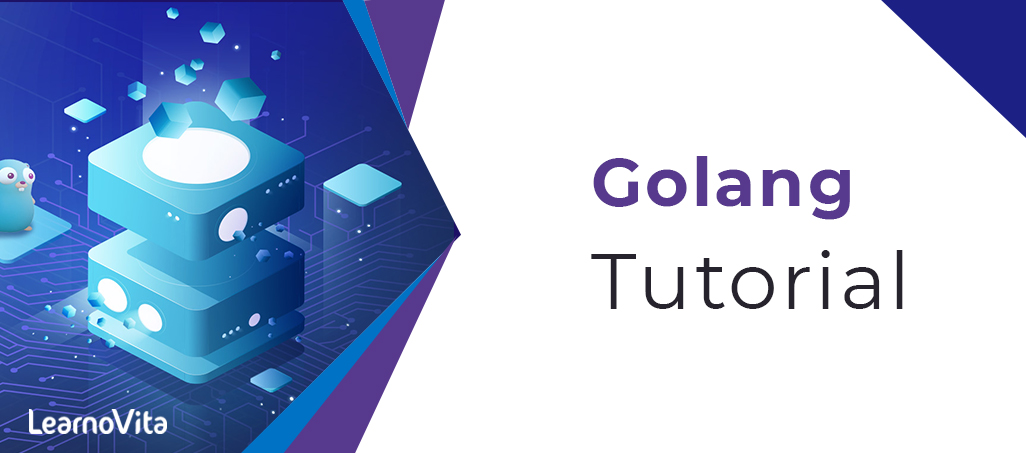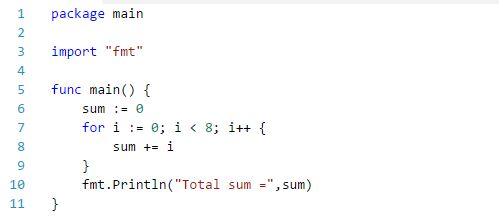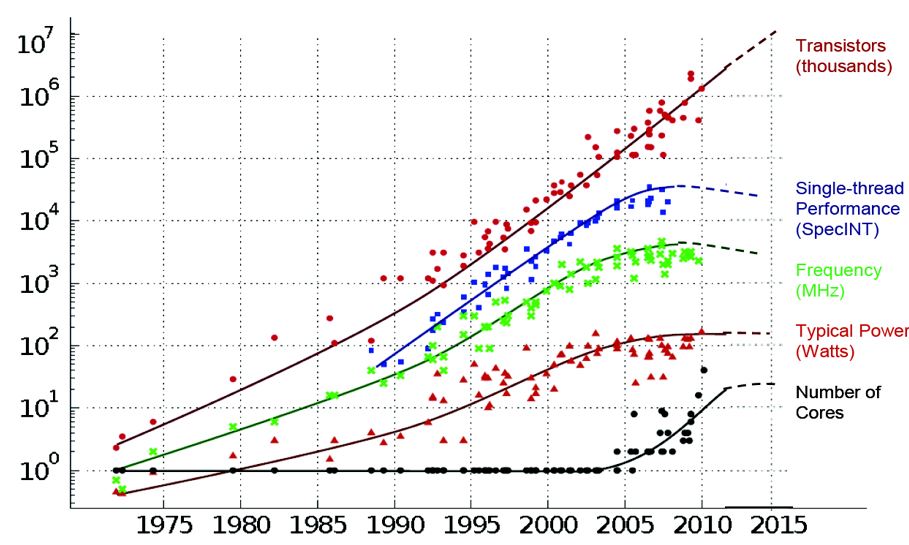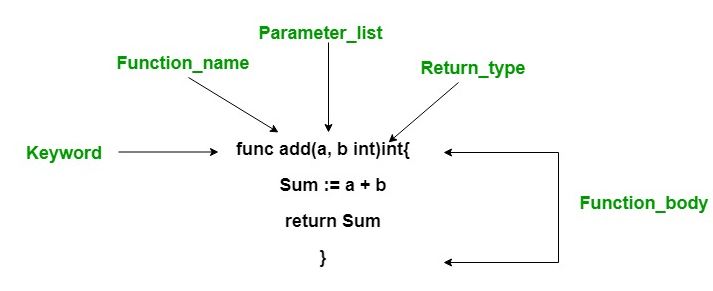- HTML Comments Tutorial | Convert Comments into HTML Codes
- Data Structure and Algorithms Tutorial | Ultimate Guide to Learn
- Gradle Tutorial | For Beginners [ STEP-IN ]
- Encapsulation In Java | Complete Tutorial With Examples
- What is Release Management? | A Comprehensive Tutorial for Beginners
- OOPs Concepts in Java | Learn from Basics with Examples
- The Top Basic Tools of Quality Tutorial | The Ultimate Guide
- Set Environment for C# – Learn How to Setup through this Tutorial
- C# Vs Java Tutorial | Overview and Key Difference
- List of IDEs to run C# Programs | Tutorial for Learning Path
- C Sharp Variables and Constants | The Ultimate Guide
- Unsafe Code in C-Sharp Tutorial | Everything You Need to Know
- Type Conversion Method in C# | A Complete Tutorial
- What Is Synchronization in c# Tutorial | The BEST Step-By-Step Guide
- Understanding Structures in C# | Learn in 1 Day FREE Tutorial
- Strings – C# Tutorial | A Definitive Programming Guide
- Static Keyword in C# Tutorial | Learn with Examples
- Stack Collection in C# Tutorial | A Definitive Guide for Beginners
- C# Sorted List Tutorial with Examples | Learn in 1 Day FREE
- C# Serialization Tutorial | Ultimate Guide to Learn [BEST & NEW]
- Regular Expression in C# Tutorial | Everything You Need to Know
- What is Reflection in C#? | Learn Now Tutorial
- Queue Collection in C# Tutorial | A Definitive Guide
- Properties in C# | The complete Tutorial
- C# Preprocessor Directives Tutorial | Learn in 1 Day FREE
- Polymorphism C# Tutorial | The Ultimate Guide
- C# Operators Tutorial | Learn Arithmetic, Comparison, Logical Concepts
- Namespaces – The complete C# Tutorial
- Multithreading in C# Tutorial | Learn With Examples and Advantages
- Methods – C# Tutorial | A Complete Programming Guide
- Linked List Implementation in C# Tutorial | Ultimate Guide to Learn [UPDATED]
- Introduction to C# Tutorial | Guide for Beginners
- What is Interface in C# | A Defined Free Tutorial
- C# Inheritance Tutorial | A Complete Free Tutorial
- Indexers in C# Tutorial | A Complete Programming Guide
- HashSet Collection in C# Tutorial | Complete Guide Tutorial For Free
- Generics in C# Tutorial | Learn Generic Classes and Methods
- Creating Your First C# Program Tutorial | Learn in 1 Day
- Basics of File Handling in C# Tutorial | The Ultimate Guide
- C# Exception Handling Tutorial | Learn with Best Practices
- Events – C# Tutorial | A Complete Programming Guide
- C# Enumerations Type Tutorial | Learn Everything about Enum
- Dictionary Collection in C# | Ultimate Guide to Learn [NEW & UPDATED]
- Delegates – C# Programming Guide | The Ultimate Guide for Beginners
- Understanding Decision Making Statements in C# | Learn Now Tutorial
- Classes and Objects – C# Fundamentals Tutorial
- C# BitArray Collection Tutorial | Learn in 1 Day FREE
- Attributes in C# Tutorial | Learn to work with attributes in C#
- C# Array Tutorial | Create, Declare, Initialize
- ArrayList Collection on in C# | A Complete tutorial For Beginners
- Anonymous Methods and Lambdas – C# Tutorial | A Complete Guide
- Abstraction in C# Tutorial – Learn the Abstract class and Interface
- Game Development using Unity 3D Tutorial | Ultimate Guide to Learn [UPDATED]
- C++ Reference Tutorial | A Comprehensive Guide for Beginners
- PHP vs Python | Which Is Better For Web Development
- C++ Constructors Tutorial: Types and Copy Constructors
- JavaScript Arrays Tutorial | Complete Beginner’s Guide
- What Is Maven | Maven Tutorial For Beginners
- Spring Tutorial | Perfect Guide for Beginners
- React Hooks Tutorial for Beginners | Ultimate Guide to Learn
- Python for Data Science Tutorial | Quickstart : A Complete Guide
- What is Golang? : A tutorial for beginners | Get started
- Hibernate Validator Tutorial | Learn in 1 Day FREE
- Postman Tutorial for Beginners: API Testing using Postman | A Complete Guide
- Akka Tutorial
- J2EE | Web Development Tutorial for Beginners
- Scala Exception Handling Tutorial | Learn in 1 Day [ STEP-IN ]
- Web development Tutorial
- Visual Studio Tutorial
- PyGame Tutorial
- Python Anaconda Tutorial
- Python Scikit-Learn Cheat Sheet Tutorial
- Mean Stack Tutorial
- Python Requests Tutorial
- Advanced Java Tutorial
- Spring Boot Microservices Tutorial
- Java Servlets Tutorial
- How to Install Pycharm
- Pycharm Tutorial
- Python Version Tutorial
- Python strings
- How to Download Python
- C Data Types Tutorial
- arrays in python
- Python While Loop Tutorial
- JAVA Tutorial
- Loops In C Tutorial
- Java File I/O Tutorial
- Variables in Python Tutorial
- Python Tutorial
- Python Pandas Cheat Sheet Tutorial
- Data Structures Cheat Sheet with Python Tutorial
- Python Tuples Tutorial
- Python If Else Statements Tutorial
- Python Functions Tutorial
- HTML Comments Tutorial | Convert Comments into HTML Codes
- Data Structure and Algorithms Tutorial | Ultimate Guide to Learn
- Gradle Tutorial | For Beginners [ STEP-IN ]
- Encapsulation In Java | Complete Tutorial With Examples
- What is Release Management? | A Comprehensive Tutorial for Beginners
- OOPs Concepts in Java | Learn from Basics with Examples
- The Top Basic Tools of Quality Tutorial | The Ultimate Guide
- Set Environment for C# – Learn How to Setup through this Tutorial
- C# Vs Java Tutorial | Overview and Key Difference
- List of IDEs to run C# Programs | Tutorial for Learning Path
- C Sharp Variables and Constants | The Ultimate Guide
- Unsafe Code in C-Sharp Tutorial | Everything You Need to Know
- Type Conversion Method in C# | A Complete Tutorial
- What Is Synchronization in c# Tutorial | The BEST Step-By-Step Guide
- Understanding Structures in C# | Learn in 1 Day FREE Tutorial
- Strings – C# Tutorial | A Definitive Programming Guide
- Static Keyword in C# Tutorial | Learn with Examples
- Stack Collection in C# Tutorial | A Definitive Guide for Beginners
- C# Sorted List Tutorial with Examples | Learn in 1 Day FREE
- C# Serialization Tutorial | Ultimate Guide to Learn [BEST & NEW]
- Regular Expression in C# Tutorial | Everything You Need to Know
- What is Reflection in C#? | Learn Now Tutorial
- Queue Collection in C# Tutorial | A Definitive Guide
- Properties in C# | The complete Tutorial
- C# Preprocessor Directives Tutorial | Learn in 1 Day FREE
- Polymorphism C# Tutorial | The Ultimate Guide
- C# Operators Tutorial | Learn Arithmetic, Comparison, Logical Concepts
- Namespaces – The complete C# Tutorial
- Multithreading in C# Tutorial | Learn With Examples and Advantages
- Methods – C# Tutorial | A Complete Programming Guide
- Linked List Implementation in C# Tutorial | Ultimate Guide to Learn [UPDATED]
- Introduction to C# Tutorial | Guide for Beginners
- What is Interface in C# | A Defined Free Tutorial
- C# Inheritance Tutorial | A Complete Free Tutorial
- Indexers in C# Tutorial | A Complete Programming Guide
- HashSet Collection in C# Tutorial | Complete Guide Tutorial For Free
- Generics in C# Tutorial | Learn Generic Classes and Methods
- Creating Your First C# Program Tutorial | Learn in 1 Day
- Basics of File Handling in C# Tutorial | The Ultimate Guide
- C# Exception Handling Tutorial | Learn with Best Practices
- Events – C# Tutorial | A Complete Programming Guide
- C# Enumerations Type Tutorial | Learn Everything about Enum
- Dictionary Collection in C# | Ultimate Guide to Learn [NEW & UPDATED]
- Delegates – C# Programming Guide | The Ultimate Guide for Beginners
- Understanding Decision Making Statements in C# | Learn Now Tutorial
- Classes and Objects – C# Fundamentals Tutorial
- C# BitArray Collection Tutorial | Learn in 1 Day FREE
- Attributes in C# Tutorial | Learn to work with attributes in C#
- C# Array Tutorial | Create, Declare, Initialize
- ArrayList Collection on in C# | A Complete tutorial For Beginners
- Anonymous Methods and Lambdas – C# Tutorial | A Complete Guide
- Abstraction in C# Tutorial – Learn the Abstract class and Interface
- Game Development using Unity 3D Tutorial | Ultimate Guide to Learn [UPDATED]
- C++ Reference Tutorial | A Comprehensive Guide for Beginners
- PHP vs Python | Which Is Better For Web Development
- C++ Constructors Tutorial: Types and Copy Constructors
- JavaScript Arrays Tutorial | Complete Beginner’s Guide
- What Is Maven | Maven Tutorial For Beginners
- Spring Tutorial | Perfect Guide for Beginners
- React Hooks Tutorial for Beginners | Ultimate Guide to Learn
- Python for Data Science Tutorial | Quickstart : A Complete Guide
- What is Golang? : A tutorial for beginners | Get started
- Hibernate Validator Tutorial | Learn in 1 Day FREE
- Postman Tutorial for Beginners: API Testing using Postman | A Complete Guide
- Akka Tutorial
- J2EE | Web Development Tutorial for Beginners
- Scala Exception Handling Tutorial | Learn in 1 Day [ STEP-IN ]
- Web development Tutorial
- Visual Studio Tutorial
- PyGame Tutorial
- Python Anaconda Tutorial
- Python Scikit-Learn Cheat Sheet Tutorial
- Mean Stack Tutorial
- Python Requests Tutorial
- Advanced Java Tutorial
- Spring Boot Microservices Tutorial
- Java Servlets Tutorial
- How to Install Pycharm
- Pycharm Tutorial
- Python Version Tutorial
- Python strings
- How to Download Python
- C Data Types Tutorial
- arrays in python
- Python While Loop Tutorial
- JAVA Tutorial
- Loops In C Tutorial
- Java File I/O Tutorial
- Variables in Python Tutorial
- Python Tutorial
- Python Pandas Cheat Sheet Tutorial
- Data Structures Cheat Sheet with Python Tutorial
- Python Tuples Tutorial
- Python If Else Statements Tutorial
- Python Functions Tutorial

What is Golang? : A tutorial for beginners | Get started
Last updated on 10th Aug 2022, Blog, Software Engineering, Tutorials
What is Golang?
Go, or Golang, is a programming language. It is a freeware programming language that was created by Google. It supports parallel programming, which means that multiple programmes can run at the same time. The syntax of the Go Programming Language is identical to that of the C Programming Language. It supports garbage collection and has a plethora of built-in functions. GoLang’s programme execution procedure is similar to that of C programming.
Why is Golang used?
The primary goal of creating the Golang programming language is to solve the problems that existing programming languages have. Golang supports a variety of programming paradigms. It has the same performance as C and is much easier to maintain than Java.The language’s popularity began almost immediately after its release in 2009. It quickly began to rise from the bottom of the global rankings to the top. According to recent reports, Golang is in high demand and popular among developers, and it is also on the list of top learning programming languages for the year 2021.
Golang Advantages:
The following are Go’s best features:
- Compiling a Go Program takes very little time.
- The Go Programming Language is platform agnostic.
- Type Embedding and Interfaces are supported.
- It includes library functions.
- Go Programs are short and sweet.

Intermediate Golang Programming Language Concepts:
Conditional Statements: They are also known as decision-making statements, conditional statements. In decision-making programmes, the statements are carried out in accordance with the condition given. One statement is executed if the condition is satisfied. If not, another statement is put into action. The following are the many conditional statements available in the Go programming language:
- If Statement
- If-else Statement
- Nested If statement
- Switch Statement
- Select Statement
- For loop
- Nested Loops
Strings:
We have the following manipulation functions in Go programming:
- This manipulation function, Len(str), is used to calculate the length of a string.
- Concatenate is a string joining or merging manipulation function.
Maps: Another significant data type offered by Golang is called Maps, which maps distinct keys to values. A key is a piece of equipment that enables data retrieval of a value in the future. You can store a value in a map object if you have a key and a value. You can retrieve the value using its key after storing it.
Arrays: An array is a type of data structure that sequentially stores elements of a defined size. The elements with the same data type are stored in an array. The memory regions in the array are all adjacent.
Advanced Golang Programming Language Concepts:
Error Handling: In every programme, we will experience certain errors either during or after the program’s execution. We have a basic built-in framework to handle certain problems in Go programmes. We employ “errors. New” to create error messages.
Interfaces: Interfaces are supported by the Go programming language so that methods can be added to Go programmes. To access data members, structures employ methods.
Type Casting: Typecasting is a technique for changing a variable’s data type. For instance, if we want to store decimal numbers in an integer variable, we must convert that variable’s data type to float32.
Go Concurrency: Go allows for task execution in parallel. It refers to carrying out several things at once. Concurrency refers to a program’s ability to perform its smaller components concurrently.
Go Mutex: To make sure that only one Goroutine may access the crucial portion of code at any time, a mutex is utilised as a locking mechanism. Lock and Unlock are two Mutex methods that are defined.
Future of Golang:

The future of the Golang programming language is quite promising. It has soared to the top 10 of all language rating indices over the previous few years. Golang is used by many well-known companies nowadays, like Facebook, Netflix, Uber, etc.Go was identified as “the most sought-after programming language” by more than 32% of working professionals in a HackerEarth survey of 16,655 developers. This demonstrates unequivocally that chances for Golang developers are abundant in the future.In the near future, you may anticipate even more experts creating and overseeing Go projects. Go will undoubtedly be a contender for the next-generation programming language because to its innovative and interesting features.
Function Invocation:
The function is called by a software to carry out a certain task. The function will use the return keyword to return the outcome after completing that task.
1.Mechanism for Passing Parameters: The parameters from the calling function can be passed to the called function in Go programming. Formal Parameters are those present in the called function, while Actual Parameters are those present in the calling function. Parameters may be sent in one of two ways.
- Call-by-value: The formal parameters in this technique are given the values of the actual parameters. The actual parameters do not reflect the changes made to the formal parameters.
- Call-by-Reference: The addresses of the actual parameters are supplied to the formal parameters in this procedure. The actual parameters reflect the modifications made to the formal parameters.
2.Recursion Function: The function which calls itself is called a recursive function. An example of a recursive function is as follows:

Conclusion:
We have now completed this Golang tutorial. We really hope that the information in this tutorial is helpful to you. Keep checking back for more blogs about Golang. Please let us know in the comment area below if you have any questions about the lesson or would want us to write a blog post on a different topic.Golang is a dynamic language that expedites development and meets your practical requirements. Fortunately, Educative offers lots of practical courses for learning and applying. Follow the crowd.The Way to Go is one course worth looking into. The only place to study the fundamental concepts and strategies of Go with practical experience is in this course. By the time you’re done, you’ll have constructed your own Go practise project and worked on more complex issues like networking and error handling.